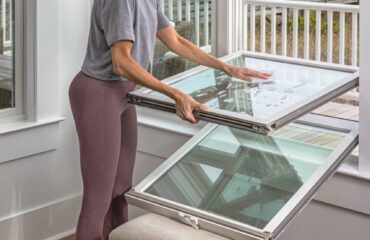The benefits of aging in place are obvious – being able to remain in your own home as you age brings you dignity and freedom, privacy, personal choice, and allows you to remain in your community. Most people over the age of 55 would prefer to stay in their home, and as a result many people are modifying their existing homes to allow them to do just that. “Aging in place”, along with “universal design”, are two terms that have come to be representative of this trend.
Quality of Life
The primary focus of aging in place is to help senior citizens continue to live where they choose and maintain a good quality of life. This extends to all aspects of a person’s life – their personal health, relationships, socialization, finances, access to transportation, and design of their home. A good plan for aging in place will not just focus on accoutrements around the home to assist someone as they age and become impaired, but be a top-down overview of things that can be improved ahead of time to prepare for an individual’s future. While we will be focusing on a home’s design, it’s important to call attention to this when making a plan for aging in place.
Changes to Your Home
As we grow older, our bodies change, and as a result so do our capabilities. Many people experience things like reduced vision and hearing, decreased muscle strength and mobility, and increased risk of illness. However, there are many things you can change in a home to assist with this.
One of the most common changes to a home is installing a walk-in tub or built in shower seat in the bathroom to reduce the risk of injury from a slipping or falling down. A less expensive solution is a movable shower seat, which has the additional benefit of being adjustable.
Another common change is installing a chair lift (or stair glide). These can be great for those with heart conditions or bad knees and come in a variety of price points with different options available for different living situations and personal needs.
The Importance of an Accessible Entryway
Many elderly people can also benefit from a no-step entryway. Being able to enter and exit the house without going down steps will greatly reduce the risk of injury from a fall, and improves the overall quality of life for those with bad knees, hips, or heart problems. However, the front door might not always be the most suitable place for a no-step entryway. If this is the case, think creatively – an existing window or patio might be able to be converted into a wide foyer that is big enough to easily enter and exit the home while providing a no-step solution.
No-step entryways are often paired with a widened front door. If your home has a narrow doorway, it might not be able to accommodate things like walkers and wheelchairs too easily. Having extra room on each side means less hassle for a senior citizen trying to enter or exit their home. A Mr. Rogers consultant can be a great resource here, providing a free onsite assessment and letting you know all of the options available for a particular home. When thinking about an entryway for aging in place, you should make sure that the path of travel to the home is easily accessible, that the entryway is wide enough, and that there is non-slip flooring in the foyer in case someone’s feet are wet. Some other things to think about are automatic light sensors on the exterior of the home, an easily viewable peephole or accessible sidelights flanking the door, a surface for placing packages on near the doorway, and even that the doorbell is easily accessible. The small details that go into an entryway can greatly improve someone’s overall quality of life.
Are you redesigning a relative’s or your own home with aging in place in mind? We’d love to help you out. If you’d like to talk to us about replacement doors or windows, please contact us and we’ll be in touch with you shortly.


















